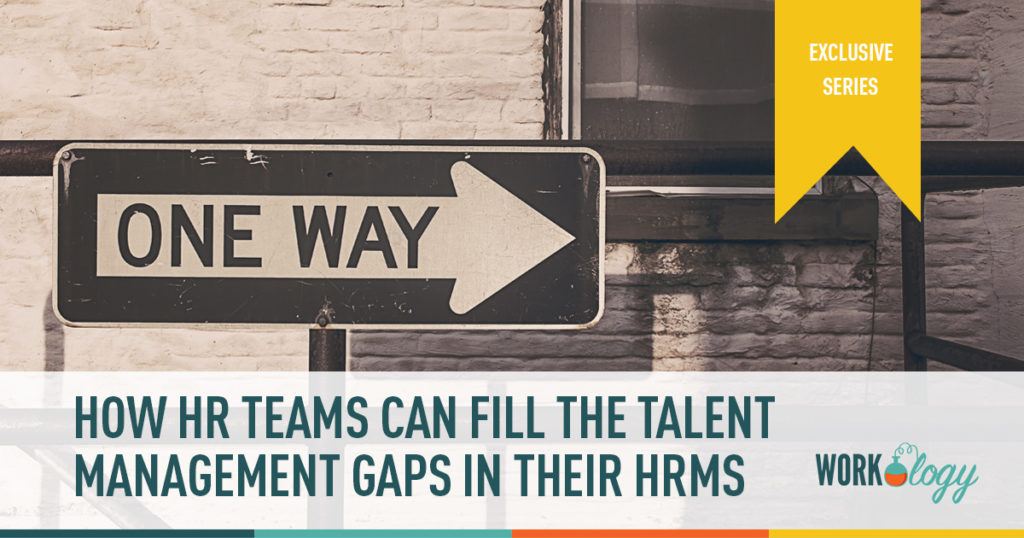Using HRMS To Fill Talent Management Gaps
According to Sierra-Cedar’s recent HR Systems survey* the Sierra-Cedar 2018-2019 HR Systems Survey White Paper 21st Annual Edition , the two human capital management areas that businesses are most likely to measure are employee turnover and performance. The research demonstrates that talent-driven organizations see 11% higher business outcomes, meaning this focus on retaining and developing talent is no longer a nice-to-have; it’s mission-critical.
Despite this, the research also found that many organizations have yet to adopt specialized talent management technology. In fact, nearly one-quarter of mid-sized and large companies use the general Human Resources Management System (HRMS), Workday, to manage and develop their talent — and other HRMS tools like SAP SuccessFactors and Oracle PeopleSoft also widely used, especially at larger companies.
But just 15% of these organizations feel that their HRMS is meeting all of their talent management needs. Of those who have Workday, just 16% say it meets their business needs all of the time and the research reported that number is as low as 13% for those using SuccessFactors and PeopleSoft.
Driving Performance is a Continuous Process
HR leaders at forward-thinking organizations have increasingly recognized the need to replace ineffective and demotivating annual performance reviews with a more valuable continuous process. A general HRMS is just not built to effectively deal with continuous elements, like aligning an individual employee’s goals with those of the company and updating goals and progress towards them regularly throughout the year.
General HRMS also cannot ensure that managers and employees regularly have the crucial conversations about performance-related feedback, career development opportunities and personalized recognition and rewards. Nor does it provide the kind of actionable, up-to-date workforce insights that help HR understand how individuals and teams are performing, identify top talent, and determine where skill gaps exist in their organization.
A general HRMS wasn’t designed to deal with the dynamic nature of a continuous approach to managing performance, so it’s no surprise just 15% of the organizations surveyed felt that their HRMS is meeting all of their talent management needs. Instead, nearly half of firms who are looking for talent management technology to support their talent-driven strategy are basing their decision on it having specific functionality needed for their unique business and process.
Enhancing the Experience for Everyone
Not least, but by no means least, is the need for firms operating in hyper-growth mode to hire and retain the proper talent. To ensure that prospects are inspired by and enthusiastic about the direction you’re all going in, teach your team how to recruit with culture and values in mind. And it’s crucial to give those dedicated workers who have helped you get where you are now the appropriate development opportunities so they may advance their careers alongside the company.
Talent management industry analyst Josh Bersin regularly highlights the importance of HR Tech being part of the employee’s “flow of work”. Otherwise it becomes a tax or additional burden that they use reluctantly instead of seeing it as something valuable to their performance and careers. When managers and employees aren’t using a talent management tool effectively or at all, the business won’t see a return on its investment.
In today’s modern workplace, mobile is a must-have for providing familiar consumer-style experiences that employees enjoy using. More than 50% of organizations now have some form of mobile HR, with mobile talent and performance apps expected to grow by around 150% over the next 12 months.
Customizing Each Continuous Approach
The method will vary depending on the size, environment, industry, and team composition of each firm, even though all continuous performance programs will include the same fundamental components, such as goal setting, dialogues, feedback, acknowledgment, and actionable insights.
One of the key functionalities that many firms demand is the capability to swiftly and simply tailor talent management technology to match an organization’s unique structure, context, and objectives. The technology required to support an organization’s growth and evolution must expand and change along with the company. Because of this, the new breed of specialist talent management services is evolving into real partners rather than merely software suppliers.
The platform’s continuing configuration and implementation, as well as advice and support on talent strategy and program roll-out, are all tasks that more than half of major firms delegate to their HR IT providers. According to a Sierra-Cedar poll, businesses report better business outcomes, particularly for user adoption rates, the more they collaborate with their workforce management technology provider.
Working Seamlessly With HRMS
While a general HRMS isn’t designed for the continuous performance approach increasingly desired by forward-thinking organizations, it remains a powerful backend workhorse for HR. The rich insights generated by continuous performance data about each employee’s performance, skills and readiness must be integrated with the HRMS, which is why 55% of businesses say that seamless HRMS integration is a key requirement for a specialized talent technology.
The ability to use these learnings in real-time to boost individual and team performance and keep employees engaged and motivated increases HR’s impact within the organization. With help from talent management services that specialize in continuous performance, provide a user-friendly experience, offer support on strategy and implementation and fill the gaps in widely-used HRMS systems, the best HR teams are becoming critical drivers of business growth.
*All statistics (unless otherwise noted) are taken from Sierra-Cedar 2018-2019 HR Systems SurveyWhite Paper 21st Annual Edition
This article was originally published in TLNT
One of the most important things any organization should strive to create is a “Culture of Feedback” that allows for open communication and continuous, transparent feedback at all levels. Get your free copy of our brand-new guide, 5 Ways HR Can Build a Feedback Culture to learn more.
Additional Resources: Help Managers Be Better Managers, Retain Your Top Talent, Align Your Workforce









